On January 17th, 1950, the battleship Missouri was headed to sea after a refit at Norfolk Naval Shipyard, Virginia. Thanks to her connection to President Truman, she had remained in commission when the rest of the American battleships were in reserve. In command was a new Captain, William D. Brown. Brown was an experienced officer, but he had never commanded a ship the size of Missouri and had been on shore since the end of the war.
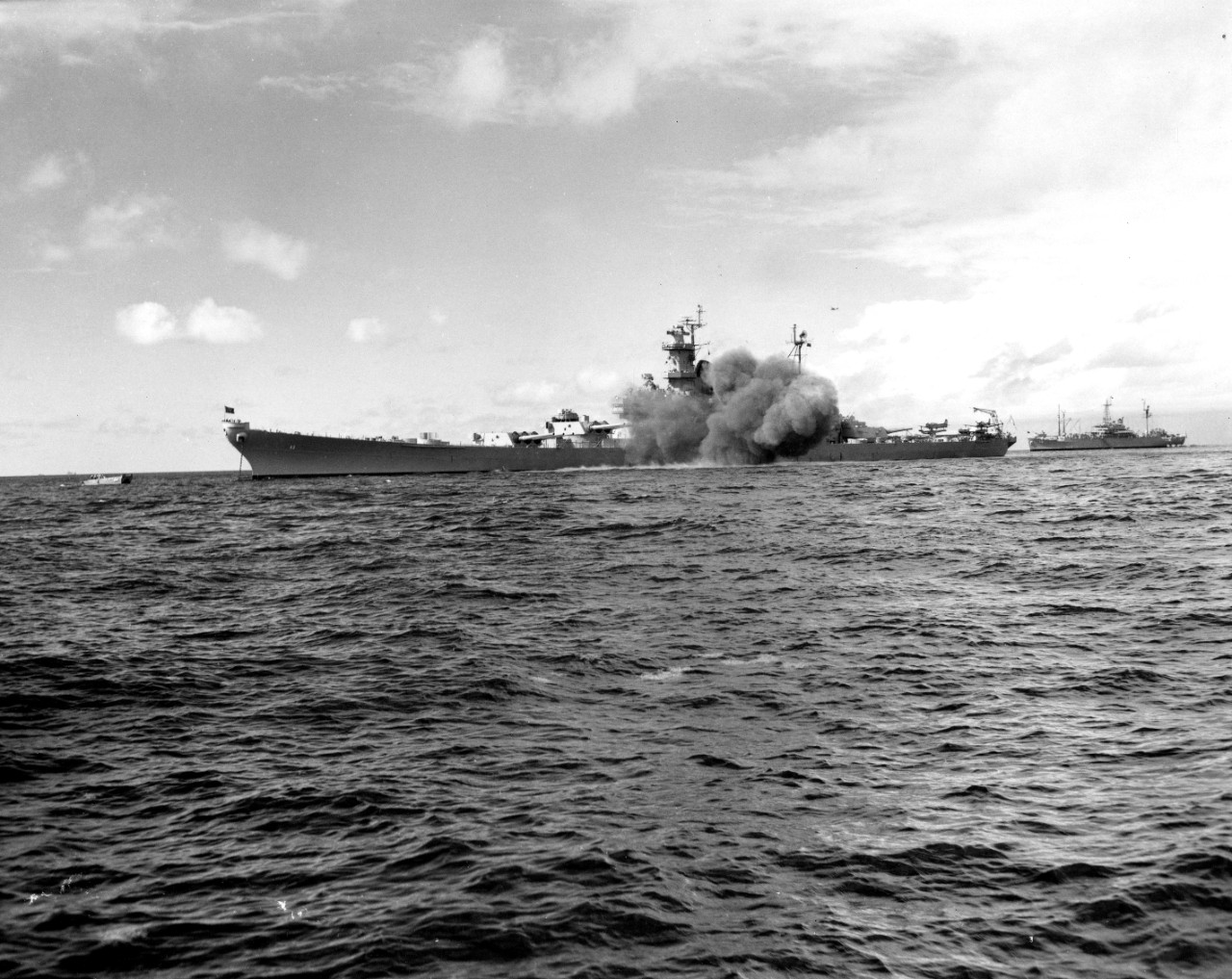
Missouri in 1949
The first task for the ship, before heading to Guantanamo Bay for maneuvers, was a run through a nearby acoustic range, part of a navy project to identify ships by their sound signature. This run was a last-minute addition to the plan, and the range itself, while deep enough to take the battleship, was dangerously close to shallow water. Worse, three of the five buoys which had previously marked the range had recently been removed, and the charts onboard had yet to be updated to reflect this. Some members of the crew did know, but there was a communication breakdown, and Brown didn’t realize this.
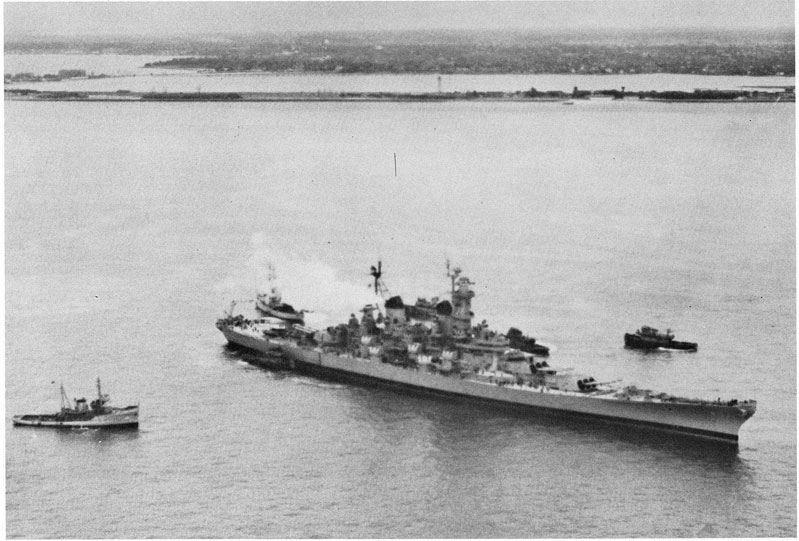
Missouri immediately after running aground
When Missouri sailed on January 17th, she was fully loaded with ammunition, fuel, and supplies, displacing 57,000 tons and drawing 35′ of water at the bow and 36′9″ at the stern. As the ship headed for the acoustic range, the situation aboard was confused. Several key officers had only learned of the run through the range after the ship had sailed, and Brown moved between the bridge and the chart room, interrupting the routine in both spaces. When the buoy marking the left edge of the range was spotted, Brown assumed it was the marker for the right edge of the range, and steered to the left of it, mistaking the buoys for a fishing channel for the missing markers. This took Missouri into shoal water, which didn’t go unnoticed. Brown ignored the navigator’s warnings, at one point accusing him of not knowing where they were, and the executive officer’s attempt to alert Brown of the danger was delivered by a talker1 who was known to mumble. Brown finally ordered a course change, but it was too late, and Missouri hit Thimble Shoal at 8:17 am. She was traveling at 12.5 kts, and the momentum drove her 2,500 feet onto the sandbar and lifted her several feet out of the water. Brown ordered the engines reversed in an attempt to pull her off, but she was firmly wedged, and the engines had to be shut down as sand clogged the condensers.2 This same problem affected the generators, so power was quickly lost throughout the ship.
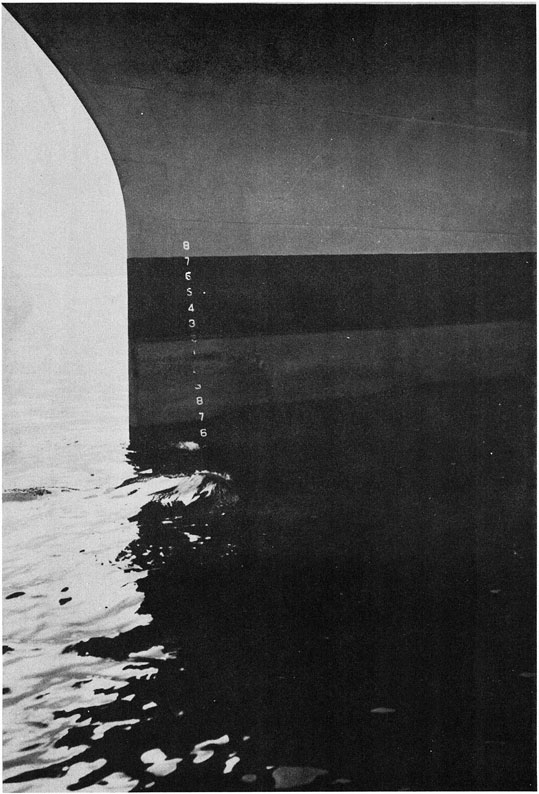
Missouri’s bow, showing the amount of hull exposed
Missouri was now stranded in full view of the naval base at Hampton Roads, and the Army at Fort Monroe.3 She quickly became a national joke, and the Navy hastened to refloat the ship. This was made difficult because of how far she had gone on the sandbar. Each inch she had been forced up was approximately 154 tons of weight resting on the bottom, and the stern draft was only 29′, seven feet higher than when she departed. Worse, she had run aground during an unusually high tide, which meant that they couldn’t simply wait for the tide to rise and then pull her off, as was common for stranded ships. The man placed in charge of the salvage was Rear Admiral Homer Wallin, who had previously commanded the salvage of the ships sunk at Pearl Harbor.4
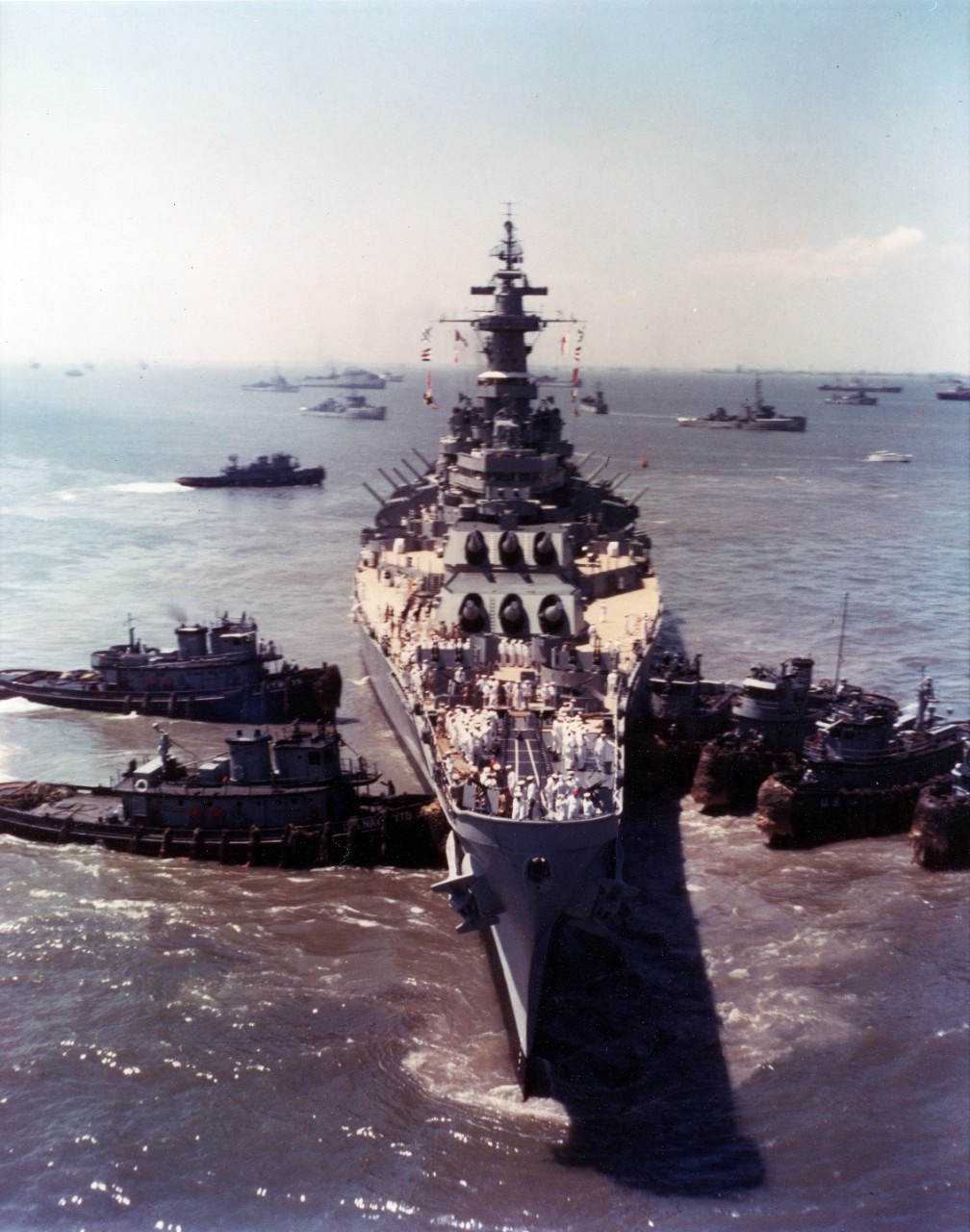
The first part of Wallin’s plan was simply to lighten the ship, removing as much weight as possible. A pair of fleet oilers were brought in to remove Missouri’s fuel. Her ammunition, from 40mm to 16″, went over the side into barges. Her supplies followed, and her crew was mostly moved ashore, too. Even the anchors and chains were dismounted and sent ashore. Power was restored as sand was cleared from generator condensers. To reduce the weight on the sandbar even more, divers dug channels under the hull and passed cables through them, which were then attached to pontoons.5
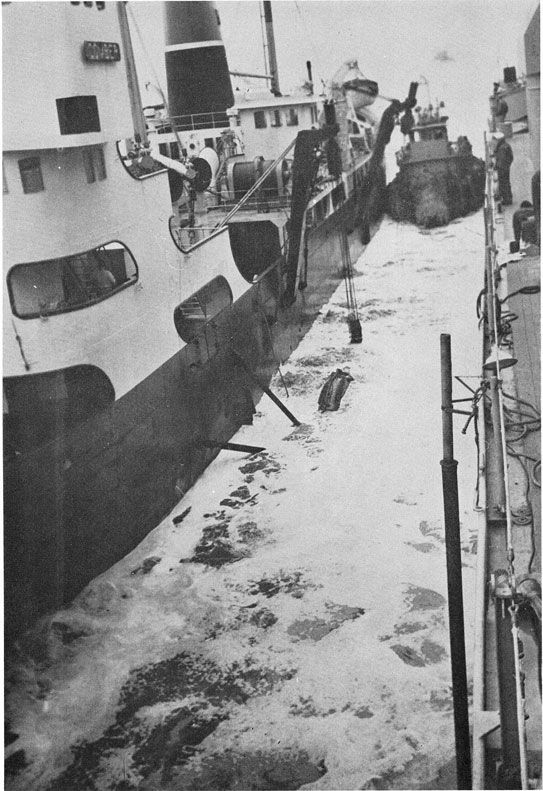
Dredge Comber working alongside Missouri
Dredges were brought in to remove the sand from around the hull, and cut a channel through which the ship could pass back to deep water. Lastly, almost two dozen tugs were brought in to pull the ship off through sheer force, and anchors were laid out from the tugs and salvage ships to give even more pull.
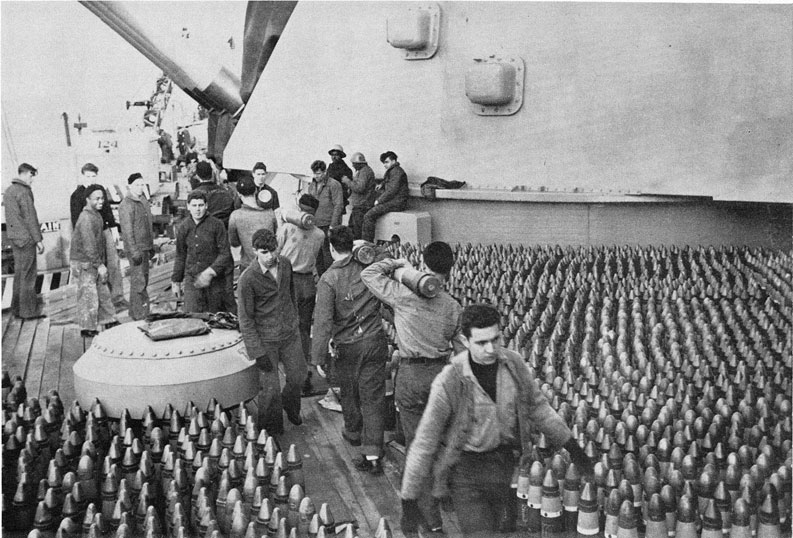
5″ ammunition being offloaded
The first attempt to pull Missouri off came on January 20th, the last suitable tide for almost two weeks. It failed, although that had been expected, and efforts continued to lighten the ship and remove sand from beneath it. By the end of the salvage, 12,023 tons had been removed from the ship.

The pull on January 31st
The second attempt, on January 31st, also failed. The pull of the tugs was so strong that 2″ thick cables snapped under the strain. Wallin remained optimistic, ending the daily report with “TODAYS PULL WAS PERHAPS THE GREATEST EVER MADE ON ANY GROUNDED SHIP X IT WILL BE MORE TOMORROW”.
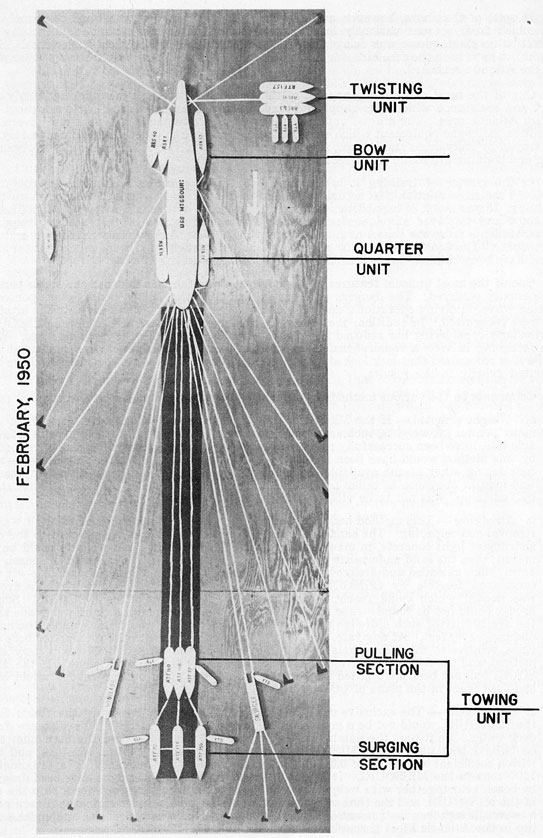
A diagram of the pulloff effort on February 1st
On the morning of February 1st, 14 tugs were arranged to pull Missouri off, five tied alongside, three anchored to the bow to twist the ship, and six tied astern. Nine anchors, known as beach gear, were attached to winches on the battleship. Two salvage ships were also tethered to Missouri and anchored with their own beach gear. At 0530, the twisting unit began to swing the bow back and forth, and the ship began to wiggle free. She was afloat again by 0709, and the rest of the tugs swung into action, pulling her down the channel that had been dredged and into deeper water. Disaster nearly ensued when Missouri sideswiped the salvage ship Windlass, but expert shiphandling meant that only the railing was damaged.6
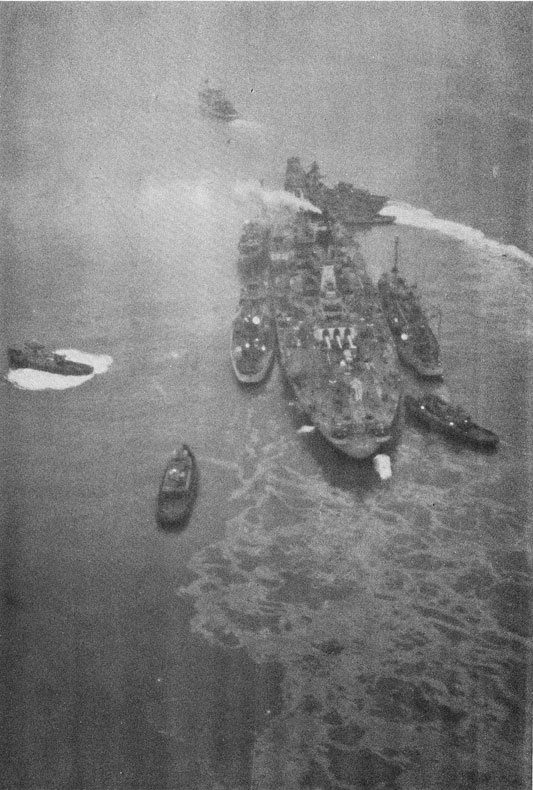
Missouri afloat and being guided into Norfolk
Missouri’s crew ran up their largest battle flags, and signal halyards spelling out “Reporting For Duty”. The band played Missouri Waltz, Anchors Aweigh, and Nobody Knows the Trouble I’ve Seen as she was towed to Norfolk Navy Yard for drydocking and repairs. There, she was found to be surprisingly intact, with the main problems being the need to clean out the main condensers, the few places the ship was damaged by obstacles on the bottom, and bent propeller tips. The repairs were completed within a week, at a cost of only $50,000.
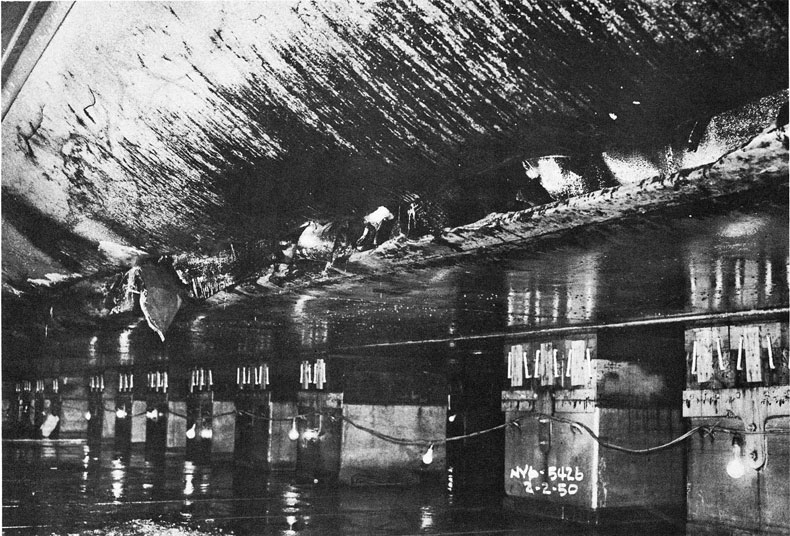
A gash in the hull of Missouri
The officers involved got off less lightly. Four officers were subject to courts-martial. Captain Brown initially tried to blame his subordinates, but when this proved unpopular with the court, he accepted blame and plead guilty to neglect of duty and negligence. He was reduced 250 places on the Navy’s list of captains, effectively ending his career. Two of the other officers, the navigator and the operations officer, were also reduced on the promotion list, while the CIC officer received a letter of reprimand.
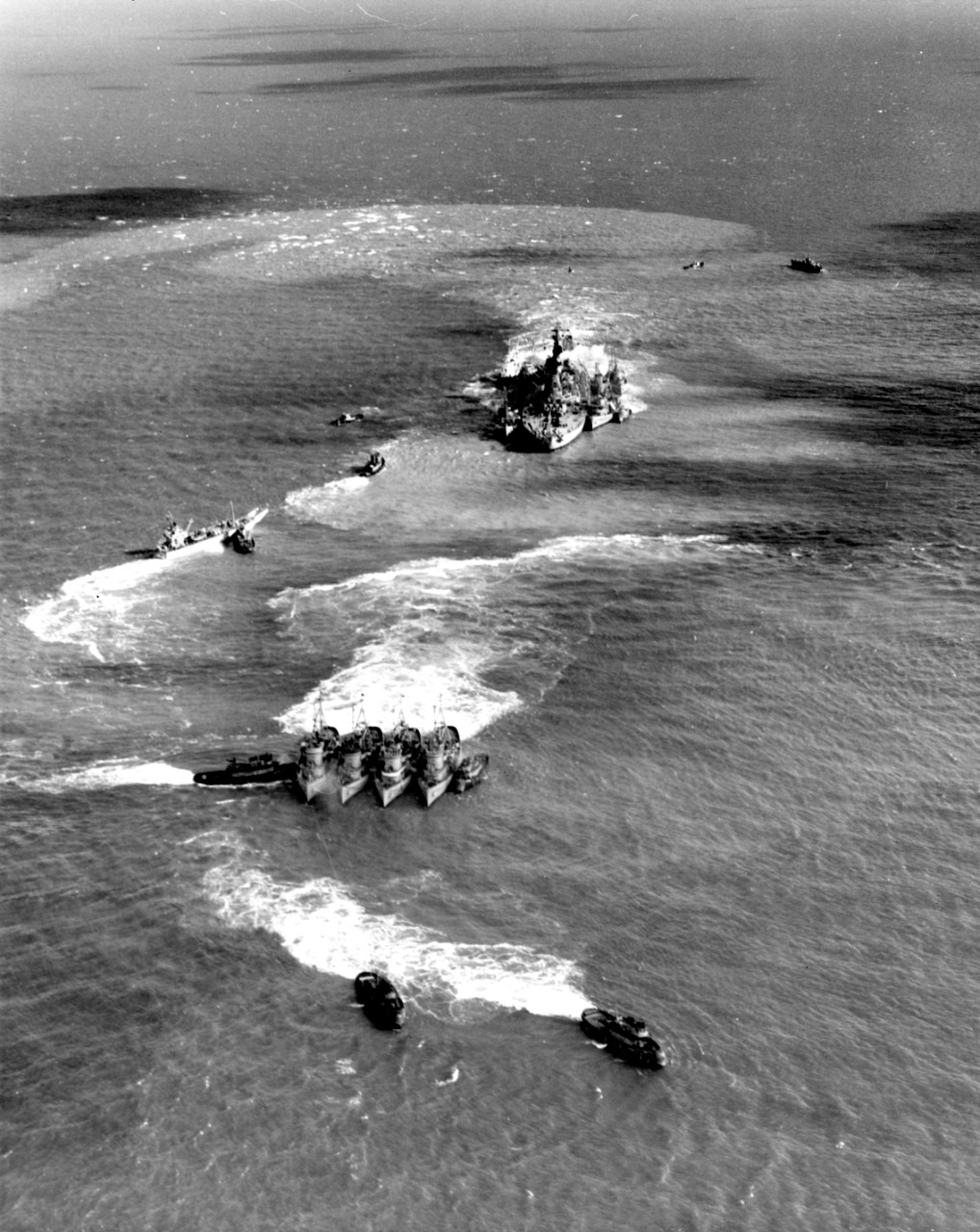
Many claim that Missouri was badly damaged by her encounter with Thimble Shoal, and that she was limited in speed for the rest of her career. I even once met someone who said that she hadn’t been reactivated with the other three Iowas in the 1980s because of the grounding. Particularly persistent are the stories that the armor of the barbette for Turret III was cracked. These are completely untrue. Missouri was barely damaged and in excellent condition in the 80s. I’ll let Dick Landgraff, the man responsible for the reactivation at Long Beach Naval Shipyard, give more details.
Despite the national embarrassment of being stranded on Thimble Shoal, Missouri would get a chance to redeem herself. Only a few months later, North Korea invadeded its southern neighbor, and she would be called to war again.
1 Most internal communication was done by sound-powered phones. These need a man on each end to serve as a relay. ⇑
2 Several of the engineering officers received commendations for their quick reactions, which allowed the boilers to be shut down before damage occurred. ⇑
3 This wasn’t entirely bad. The official report pointed out that the ship was was in sheltered waters and right next to one of the largest collections of salvage equipment in the Navy’s inventory. ⇑
4 One humorous aspect of the situation was the flood of mail the Navy received with suggestions about how to refloat the ship. Some of the suggestions were good, but these were almost invariably received after the idea had already been implemented. Many of them were rather silly, like the one that suggested consulting someone with false teeth as an expert on suction. ⇑
5 The local helicopter squadron reportedly staged a photo where it appeared that two of their helicopters were lifting the ship, which the pilots got in a fair bit of trouble for. Unfortunately, I can’t find a copy, and I’m not sure that it actually happened. ⇑
6 For more information on the salvage, see the official report. ⇑

Comments
Obviously they should have convered her into a hovercraft.
Maybe the navy should have an annual William D. Brown Award, for the biggest screw-up that didn’t kill anyone.
I really doubt the USN would hand that out. They just give out exploding command pips in those cases. But maybe I should create that award. The problem is that I don’t follow USN news closely enough to be confident of my ability to give it out.
Is position in the Navy’s list of captains the same thing as lineal number? If so and if I’m reading correctly, the direct practical impact of the reduction is that 250 people who were promoted to captain after him now became senior to him for the purposes of consideration for promotion and for breaking ties for who’s in charge among people of equal rank.
There are currently about 3000 active-duty captains in the US Navy. I’m not sure how many there were in 1950: I can think of reasons it might be a lot higher (more ships) or a lot lower (rank inflation and proliferation of administrative roles requiring senior officers). But using the current figure as a first-order approximation, that’s only moving him a bit less than 10% of the way down the list, which doesn’t sound too bad at first glance. On the other hand, there are only a hundred or so one-star Rear Admirals, so the rate of promotion from Captain to RDML is probably pretty slow and the promotion board is spoiled for choice of in-zone Captains to pick for a handful of open slots, so it may take some time for promotions and retirements to put Captain Brown back in zone for promotion, and a court-martial verdict lowering him 250 places for beaching a battleship probably wouldn’t impress a promotion board when his number comes up.
Also, does position on the seniority list affect priority for selection for more interesting or more prestigious postings? It seems like the sort of thing it would affect, but I can’t find anything concrete with a quick googling.
I don’t think the system back then worked quite the same way, but the consequences were indeed what you describe. I believe Brown was approaching mandatory retirement for Captains, and would have been at that age by the time he was back in the zone. I also don’t know what the number of Captains was back then, but IIRC, Brown ended up getting a tombstone promotion to RDML. (Basically, he got his star the day he retired.) That was pretty common back then, probably as a result of the havoc WWII wrought on the personnel system.
Thank you for the historical account of the 1950 salvage of Big Mo from running aground. I was told that my father, Frederick S. Frederickson, Jr. (Lt. and later LCdr.) was involved in the drydocking of the Missouri at Norfolk Naval Shipyard for repairs. I understood he then served on Guam at the Naval Ship Repair Yard during the Korean War. He married my mother, a Navy Nurse, in 1951. I was born on Guam in 1953. My father died in 2005 at 86 years old. Anyone who could share related information would be most appreciated. Thank you.